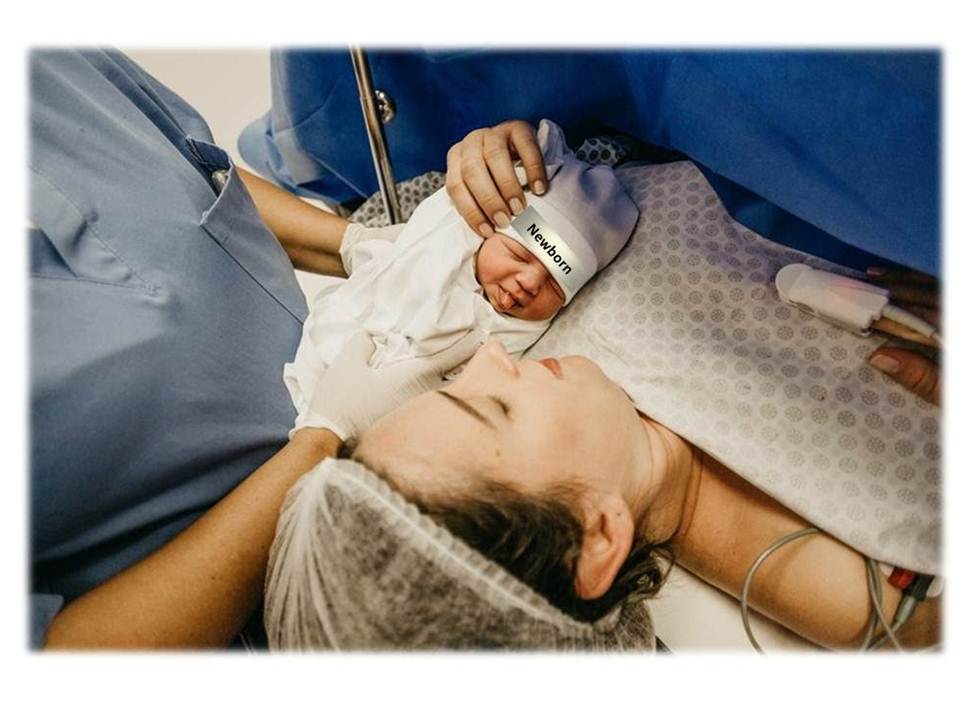Professionals for Women's Health is an obstetrics and gynecology clinic in Westerville, Ohio, that provides comprehensive reproductive health care to women of all ages. In addition to this site, the Westerville OB/GYN practice also operates offices in Columbus and Dublin, Ohio.
The physicians and staff are dedicated to providing women with the best level of individualized care, including well-woman care (Pap smears and breast examinations), prenatal care, labor and delivery, robotic hysterectomy, urodynamic testing, and menopausal treatment, among other services.

OB/GYN physicians are in-network with a range of health insurance companies, Medicaid, and Medicare at Professionals for Women's Health in Westerville, Ohio. In addition to cash, checks, and money orders, Visa, MasterCard, and Discover are also acceptable forms of payment.
Professionals for Women's Health Services
Pregnancy and obstetric services
On their website, you'll find a variety of useful information regarding your pregnancy. Any topic is available to you.

-
Prenatal testing
Regular tests
All pregnant women are exposed to a battery of tests early in the pregnancy. Among the tests offered are blood tests (blood count, blood type, rubella immunity, hepatitis, and a state-required syphilis test), a urine culture, a Pap test, a state-required cervical culture for gonorrhea, and a chlamydia culture.
Around 28 weeks of pregnancy, Rh-negative women are tested for RH antibodies and given a RhoGam injection. They do a routine test for gestational diabetes at 28 weeks. At 16-18 weeks, they provide an improved serum alpha-fetoprotein test (AFP) to screen for head and spinal abnormalities as well as Down's syndrome.
Ultrasound scan
An ultrasound, sometimes known as an echogram or a sonogram, may be requested. The most common reason for an ultrasound scan is to date a pregnancy, as up to 40% of pregnant women's menstruation dates are inaccurate.
For a variety of reasons, it's critical to get a precise estimate of your due date. The care of your condition is mainly reliant on your gestational age if difficulties arise. The earlier an ultrasound scan is conducted during pregnancy, the more accurate it is for dating.
Ultrasound scans can also be used to discover multiple pregnancies, many (but not all) forms of congenital abnormalities, the source of vaginal bleeding, and fetal growth retardation.
All high-risk pregnant women should be evaluated at least once, if not many times, during their pregnancy. When patients watch their unborn baby move on the ultrasound screen, they usually feel reassured, and preliminary research shows that ultrasound scans may help with the bonding process before delivery.

Genetic analysis
Non-invasive genetic screening, also known as cell-free fetal DNA, is offered by Professionals for Women's Health. Maternal-Fetal Medicine offers diagnostic genetic testing alternatives such as CVS and amniocentesis.

-
Development of the fetus during pregnancy
This section discusses your baby's growth as well as your changes as your pregnancy develops. At your regular appointments, they discuss a variety of topics with you. Please do not hesitate to ask your provider any further questions.
Period of 4 weeks
The embryo is less than a quarter-inch long at this time. The baby's initial body segments, which will later form the brain and spinal cord. The heart, blood vessels, and gastrointestinal system acquire form.
You are missing your first menstruation at this time. Your breasts swell and become painful. Chronic tiredness and urine frequency may appear and last for three months or more.
Eight weeks
The embryo develops at a breakneck speed. The baby's heart starts to pump blood, and his or her limb buds have fully formed. The primary divisions of the brain and facial characteristics may be seen. Skin folds create the baby's ears, and underneath the thin skin, small bones and muscles form.
At this time, the embryo has grown to roughly two inches in length.
Morning sickness can persist for up to a year, and the shape of your uterus will shift from pear to globular. Vaginal discharge may become more frequent. In most cases, there is no weight increase.
Twelve weeks
The embryo develops into a fetus. Doppler imaging can detect its beating heart. The lower body of the infant evolves into a more human form as it grows. The kidneys begin to generate urine when the organs begin to specialize. Fingers, toes, ears, and eyelids develop as his or her face features and limbs grow more defined.
The fetus is three inches long and weighs around one ounce. Your uterus protrudes above the brim of your pelvis.
If you want to rule out birth abnormalities involving the brain and spinal cord, the AFP blood test can be done between 16 and 18 weeks.
Weeks: 16
The musculoskeletal system of the infant has grown, and his or her neurological system is beginning to exercise control. Blood vessels grow quickly. The baby's fetal hands and legs can grip and kick vigorously. The organs begin to develop and mature. The fetus weighs around seven ounces and is about six inches long at this time. Between the pubis and the navel is the fundus (top of the uterus).
Each week, you gain around one pound and may feel more energy as a consequence. You could feel a change in vaginal secretions and start wearing maternity clothing. Urinary frequency reduces when the pressure on the mother's bladder lowers. Between 1 and 2 a.m., you start to feel fetal movements (quickening).

Twenty weeks
The baby's motions are more pronounced and noticeable. The infant is around 10 inches long and weighs about half a pound. The body is covered with fine hair. The brows, eyelashes, and hair on the head grow. The fetus establishes a regular sleeping, sucking, and kicking pattern. The fundus extends to the apex of the navel. Colostrum may be secreted by your breasts.
Around 20 weeks, an ultrasound is commonly performed. The fetal anatomy, placental location, and fluid volume may all be determined with this ultrasound. You will be advised of diabetes screening during your consultation around weeks 20-24.
Period of 24 weeks
The baby's skin seems to be wrinkled and red. The skeleton of a newborn grows quickly as bone-forming cells become more active. The action of the lungs begins. The fetus weighs around one pound and ten ounces at this time. Above the navel is the fundus. Backaches and leg cramps may appear, as well as changes in your skin and stomach itching.
Twenty-eight weeks
The fetus is capable of breathing, swallowing, and temperature regulation. His eyes may open for brief periods on occasion. The infant is now 2/3 the size it was at birth. Between the navel and the breastbone is your fundus. It's possible to feel the fetal outline. Around this stage, parents begin taking childbirth preparation classes.
During your 28-week appointment visit, blood is collected for diabetes screening.
You will also have your antibody screen drawn if you are Rh-negative regularly. You will also receive your RhoGam injection on this day.
Your office visits will decrease from every four weeks to every two weeks at 28 weeks of pregnancy.
Weeks: 32
The baby is about completely developed now, and his movements are noticeable from the outside. The baby's skin is less wrinkled, and he or she is generally lying down with his or her head down. The length is roughly 16 1/2 inches and the weight is approximately four pounds.
The mother's breasts are large and sensitive, and the fundus has reached the bottom of the breast bone. Urinary incontinence may reappear. You may have swollen ankles and difficulty sleeping.
You'll also get pre-admission paperwork for the hospital where you want to give birth. During this time, they recommend taking a tour of the labor and delivery units.

Weeks: 36
After 36 weeks of pregnancy, you will get postpartum instructions. Your planned visits are now every week rather than every two weeks. We talk about labor and delivery options, such as which hospital you want to go to, how you want to be anesthetized, and what to do if you go into labor (when to call, etc.).
Weeks: 38
The baby occupies the whole uterus, making its movement less noticeable. Antibodies from the mother are passed on to the child. This will offer protection for around six months, or until the infant's immune system is capable of taking over.
The fetus enters your pelvis at a deeper level. The placenta has nearly quadrupled in size since 20 weeks. As your cervix and lower uterine segment prepare for labor, backaches, urine frequency, and Braxton Hicks contractions become more intense.

-
Complaints Associated with Pregnancy
Almost all pregnant women experience some of these common adverse events. Bring them to our notice if they are very painful or frequent.
-
Within the first part of pregnancy, nausea and vomiting are common
-
Fatigue
-
Frequent urination, which is usually worse during early and late pregnancy (This is normal unless accompanied by a burning sensation during urination)
-
Breast enlargement and tenderness
-
Low backache
-
Round ligament pain (pain in the lower abdomen that radiates into the groin area): This can be relieved by lying on your side and massaging your lower abdomen.
-
Constipation: Drink plenty of water, exercise, eat plenty of fruit, and consume bran cereal to relieve constipation. Occasionally, fiber supplements such as Metamucil® or Milk of Magnesia may be necessary. During pregnancy, harsh laxatives should never be taken.
-
Risk Signs during pregnancy
These symptoms and signs may signal that anything is wrong with your pregnancy.
Return to your healthcare provider if you have one or more of the following symptoms:
-
vaginal bleeding. If you start bleeding like you're having a menstrual period, call the office right away.
-
Vomiting and/or diarrhea regularly.
-
Swelling of the face or hands that is sudden or severe, as well as a severe, ongoing headache.
-
Blurred vision, dizziness, or spots in front of the eyes are examples of visual alterations.
-
Chills with a temperature of more than 101 degrees.
-
Abdominal discomfort that is sudden, acute, or rhythmic.
-
A burst of fluid from the vaginal opening.
-
Irritation, itching, a foul odor, or lesions in the vaginal area.
-
Urination causes burning or pressure.
-
Hives or a rash.
-
Palpitations and acute breathlessness
-
Contractions that last 30 to 40 seconds regularly.
If you notice these symptoms, call the office immediately.
-
Nutrition during pregnancy
Babies grow and develop rapidly over their nine months in the womb. The nutrients and energy that enable this fast development come from your food. Studies show that a mother's nutrition throughout pregnancy significantly impacts a baby's health at delivery.

During pregnancy, it is critical to maintaining negative healthy eating habits.
You should have:
-
Four servings of protein each day.
-
Vitamin C meals in two servings
-
Four calcium-rich meal servings
-
Green leaves and yellow vegetables, as well as yellow fruits, in three portions.
-
Two additional servings of fruits and vegetables
-
Whole grains and legumes in five servings
-
Foods are high in iron.
-
A minimum of 64 ounces of liquid. (Not including caffeine-based drinks; milk is just 2/3 water.)
-
You may have preconceived notions regarding salt consumption during pregnancy. Unless otherwise directed, season your food to taste and avoid salt restrictions.
Stop alcohol
Please refrain from consuming alcoholic beverages. Fetal Alcohol Syndrome is the greatest avoidable cause of intellectual impairment and is caused by alcohol use during pregnancy. Facial deformities, reduced height, hyperactivity, difficulty with learning, concentration, memory, problem-solving, poor coordination, impulsiveness, speech, and hearing impairments that last throughout adolescence and adulthood are some of the other side effects.
-
Weight gain during pregnancy
Desirable weight gain is calculated using your pre-pregnancy BMI (Body Mass Index). A five-pound increase is typical throughout the first three months of pregnancy. An average increase of 3/4 to one pound each week is expected for the duration of the pregnancy.
Weight loss during pregnancy is not recommended since it might harm your baby.
-
Labor and Delivery
Childbirth education may make your pregnancy and delivery more enjoyable and healthy for you and your partner. While some individuals are hesitant to attend birthing courses at first, the majority of people discover that they like them immensely.
Several organizations provide a range of courses, including those for people who are aware that they will be undergoing a Cesarean section. All patients are highly encouraged to attend one or more of these courses.
Anesthesia
Many women, especially with their first child, require pain medication during labor and delivery. Although periods of birthing education classes can help you decrease the amount of medication you need, some medication is typically required. Most types of anesthetics are safe for you and your baby if administered properly.
Professionals for women’s health propose modest doses of Nubain, a narcotic if you simply require a little aid during delivery. If you want more relief, an epidural block is frequently recommended.
They don't utilize "twilight sleep" anesthesia for a vaginal birth, and they practically never use general anesthesia.
They recommend epidural or spinal anesthesia if your baby is delivered by cesarean section. In an emergency or if there are specific pregnancy concerns, general anesthesia may be indicated.
Electronic fetal monitors for successful labor
Professionals for women’s health believe that electronic fetal monitors can assist ensure a successful labor result, particularly in high-risk pregnancies. Many couples find the monitor relaxing, and some even use it to assist them with their Lamaze breathing techniques.
Internal or external monitors may be utilized, depending on the patient.
When should you call the office?
When your contractions last at least 60 seconds and are around 5 to 6 minutes apart. If you feel contractions and are less than 32 weeks pregnant, call the office since you may be in preterm labor.
Ruptured Membranes Contact the office immediately if your water breaks, even if just a tiny amount of amniotic fluid is leaking.

Professionals for women’s health postpartum guide
When you go home, confine your activities to caring for the infant and outsource domestic duties, cooking, and other tasks to others for the first week. Reduce the number of trips up and down the stairwell and take them slowly. During the first week, you should not lift anything heavier than the infant. For the first two weeks or so, you'll need extra rest during the day; consequently, morning and afternoon naps are recommended.
For at least the first week, continue to take sitz baths three times a day. If the vaginal flow is not considerable, you can bathe in the tub right after giving birth.
Postpartum bleeding
Lochia is a term used to describe postpartum bleeding that can last anywhere from two to eight weeks. In the hospital, your discharge is bright crimson and thick, but it appears like your menses when you go home. When you go home, the flow will slow down even more, and the hue will shift from brilliant red to pink, then yellow-white. If your discharge returns to red or increases inflow, you've done too much and need to take a break. It is necessary to contact the clinic if you have a lot of pain.
Please note:
It's normal for the breasts to enlarge to some extent. We recommend using an ace wrap bandage over the breasts for 24 to 48 hours, or until they are comfortable. You can also apply ice packs to your breasts for 20 minutes three to four times per day for 24 to 48 hours, three to four times each day. Hot baths, loose clothes, and manipulation are all examples of unnecessary direct stimulation of your breasts. If you aren't told otherwise, don't eat too much.
Breastfeeding
Wear a strong, supportive nursing bra throughout day and night. Avoid putting soap on your nipples directly. Allow your nipple to air dry after a nursing session. The nipples will stay smooth and supple thanks to the natural oil glands that surround the areola. Breast creams aren't recommended. Engorgement may be avoided by eating 8 to 12 times per 24 hours. For the first one to two weeks, expect nipple discomfort.
Please contact the office if you notice any cracking or bleeding in your nipples. The office can arrange for a consultation with a lactation consultant.

Problem of constipation
All-natural foods to eat include prunes, prune juice, apple juice, apple cider, bran flakes, and raisin bran. Increasing your fluid intake, especially water, is a good idea. Avoid any products containing caffeine. Take one ounce of Milk of Magnesia before sleep if you need a laxative.
Please remember: The healing process requires a well-balanced diet. A nursing mother's daily caloric needs are often 2,000 calories or higher. Protein-rich foods, such as meat, cheese, dairy products, and eggs, should be included in your diet.
Episiotomy
Your sutures will naturally disintegrate. It's quite natural to feel a sticking or tugging feeling in the vaginal region during this period. Sitz baths and a gradual increase in exercise are two comfort treatments. To relieve pain, use two aspirin or Tylenol® pills every three to four hours.
Start exercising
When the baby is one week old, you can start exercising. If any action causes you discomfort, you should stop. Avoid workouts that require direct use of the stomach muscles, such as sit-ups, until your 4-week checkup if you had a C-Section. Until your 4-week test, no running, jogging, or aerobics.
Minimize the risk of hemorrhoids
Avoid standing or sitting for lengthy periods of time to reduce pain. Rest as much as possible you can throughout the day. Kneeling/chest posture is very soothing and beneficial. Allowing oneself to become constipated is not a good idea. Drink a lot of water! Sitz baths can assist, as might Preparation H® or Anusol HC®.
Menstruation
If your baby is bottle-fed, menstruation will most likely return four to ten weeks after delivery. If you're nursing, you could get 3 months or longer after delivery, although it's unlikely. Your first period may be heavier than usual.
Depression postpartum
You may experience a range of emotions throughout your postpartum period, and you will most likely experience 1-3 days of "Baby Blues." If symptoms last longer than a week or are severe, please call the office to schedule an appointment to treat postpartum depression. Also, visit the website's postpartum depression section under pregnancy.

Sexual behavior postpartum
For the first four weeks following delivery, intercourse is not recommended. After that, the healing process may be complete, and the discharge may be reduced sufficiently to allow for pleasant sexual interactions. K-Y Jelly or Replens, both over-the-counter lubricants, are recommended as a lubricant since the vaginal area is typically drier after birth. Until your four-week checkup, vaginal foam and condoms should be used as contraception.
Don’t forget: If you're nursing, keep taking prenatal vitamins for three months after the baby has been weaned. Continue taking these for three months after birth if you're bottle-feeding.

When should you call?
-
If you're soaking more than a pad in an hour or having a lot of pain from postpartum bleeding, call your doctor.
-
If you're passing clots the size of golf balls or clots after two weeks after giving birth.
-
If postpartum depression hazards are still more than a week or are severe.
-
If your nipples break or bleed, get medical attention immediately.
Summary:
Our dew treats for you today are about... Professional for women’s health but we have more details, advice, and knowledge tips to enjoy your pregnancy and safe labor.


You must be logged in to post a comment.